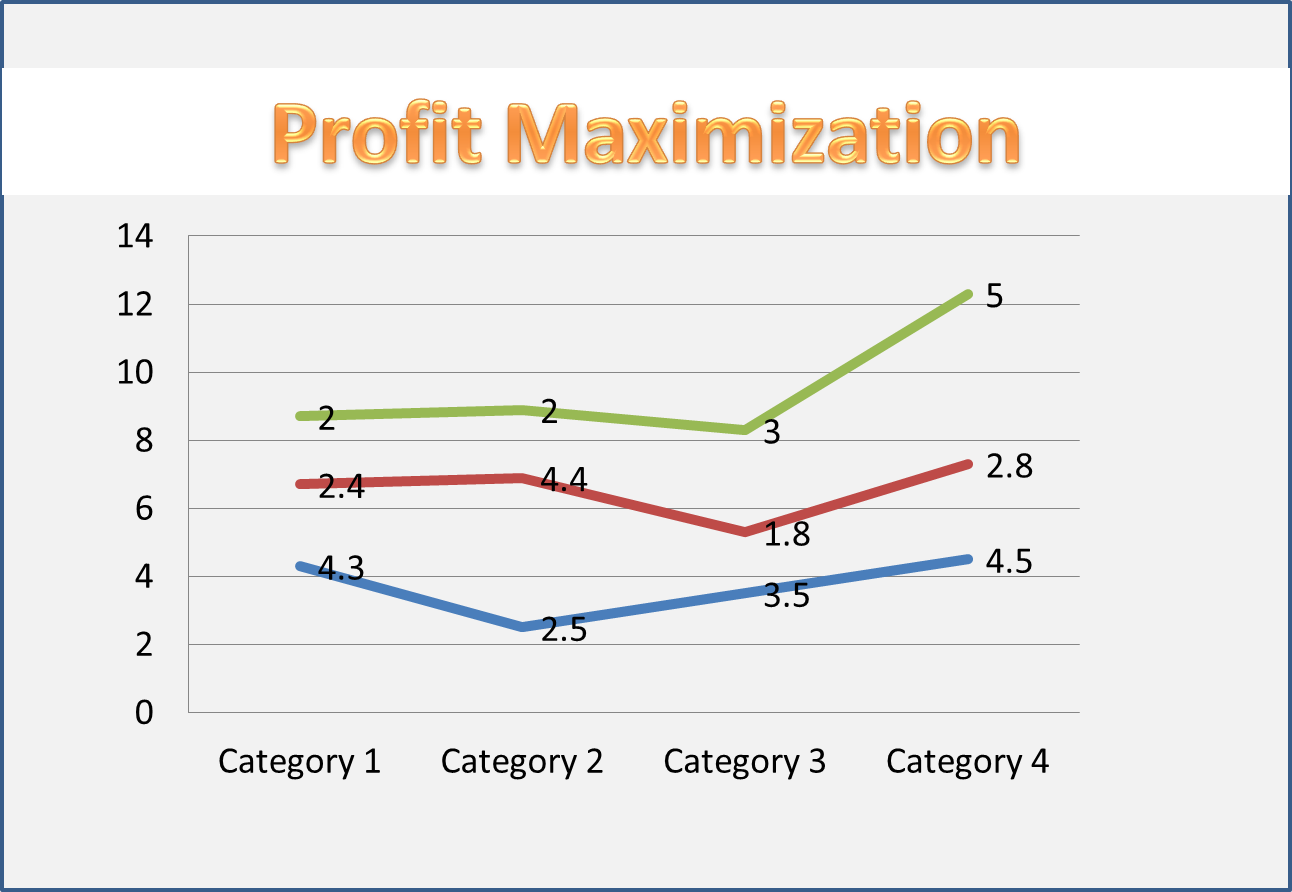
Profit maximization is the traditional and narrow approach. As per traditional theories, maximization of profit is considered to be the sole objective of a business organization. This theory is also called as cashing per share maximization. As per the requirement of the firm, the product price and output are placed under competition to maximize profit. Profit maximization is said to be the maximization of returns by the firm in terms of monetary resources and increasing the earnings per share of the shareholders. Firms often select investment proposals which suit their profit maximization criterion. The firm selects only those investment projects which provide excess profit and reject projects which provide comparatively less profit. Maximizing of profit by a firm, is often influenced by the input-output relationship, where firms tend to lower their cost of capital and try to achieve maximum profit and shareholders’ wealth maximization. Thus, with the right selection of project, the firm can maximize its productivity and efficiency in the operation activities.
Features of Profit Maximization
Profit is one of the most significant measures for assessing the efficiency of any business or economic activity. The survival and growth of a business concern also depend on its profit-earning capacity. Traditional theories like, profit maximization is the sole objective of a business concern. Some of the salient features of profit maximization objective are as follows:
- Profit maximization is related to the maximization of earnings per share of the firm.
- An increase in profitability is one of the foremost concerns of every business organization and thus involves various procedures and methods to maximize profits.
- Profit is one of the benchmarks of operational efficiency, survival and well being of a business organization, as it reflects its business decisions and policies.
- The objective of profit maximization minimizes the risk and uncertainty factors in business decisions and operations.
Arguments in Favor of Profit Maximization
Some of the arguments in favor of the objective of profit maximization are as follows:
1) Measure of Financial Stability: The profitability of a firm is an important indicator of its financial stability as well as economic well-being.
2) Promotes Socio-Economic Welfare: Increased profit, promotes the socio-economic welfare of various stakeholders associated with the firm. It aids in shareholders’ wealth maximization, increased incentives and benefits to employees, better and improved products to customers, employment generation, etc.
3) Retained earnings: Retained profit acts as a major source of long-term finance for a company. Retained earnings with a low cost of capital, can be utilized for fixed assets acquisition. expansion and modernization projects of the firm. Thus, outside funding’s not required.
4) Increases Competitiveness: Maximization of profit by a firm helps it to sustain competition from its competitors. With increased profits, a firm is more capable to sustain its growth and development amongst severe competition, through product development, market development and gaining market share.
5) Decision-Making: Increased profitability strengthens the foundation for sound managerial decision-making and also helps to solve agency issues in an organization, through optimum utilization of funds for business expansion as well as increased returns to shareholders.
6) Desire for Controls: When the company earns huge profit, the entry of the shareholders is restricted subject to internal use of funds for expansion and modernization. And this in turn leads to full control of the company to the existing shareholders.
Limitations of Profit Maximization
However, the objective of profit maximization has been questioned and criticized on several grounds. Some of the limitations that are associated with the objective of profit maximization are as follows:
1) Ambiguity: The complexity of the profit maximization criterion for financial decision-making is that the term profit is an ambiguous and confusing concept. It has no specific implication. It is open to different understandings by different individuals. For example, profit may be short-term or long-term: ît may be total profit or rate of profit margin; profit after tax or profit before tax; return on capital employed or assets or return on equity. Thus, as an objective of profit maximization, the issue arises as to which variant of profit a business concern should try to maximize.
2) Timing of Benefits: A more significant limitation to the objective of profit maximization is that it ignores the differences in timings of the benefits received over the working life of the asset, irrespective of when they were received. The profit maximization criterion does not consider the time value of money.
4) Impact on Social Welfare: Increased profits may often lead to the organization producing such products or services which may not be beneficial and useful to the society at large. Thus, such objective may sometimes fail to optimize social welfare.
5) Ignores Financing and Dividend Aspects: Another limitation of the profit maximization objective is that the effects of financing and dividend decision areas on market price of shares are often ignored while pursuing the objective of profit maximization.
6) Change in Organization Structure: Earlier, an owner manages the business alone because at that time the competition was too less. The organization structure that has single owner is referred as sole proprietor. The whole profits and liability belongs to him. But now, all the businesses are transforming their structure to compete.
